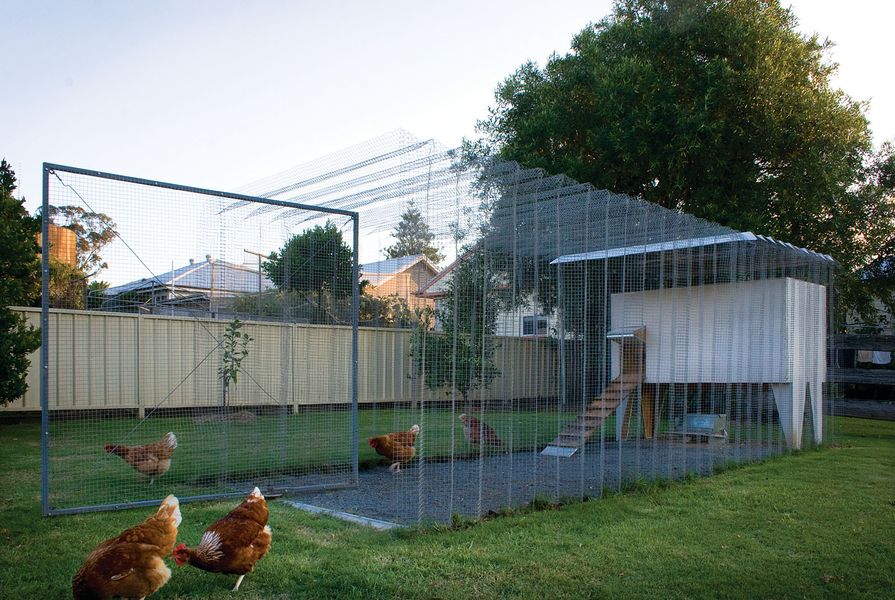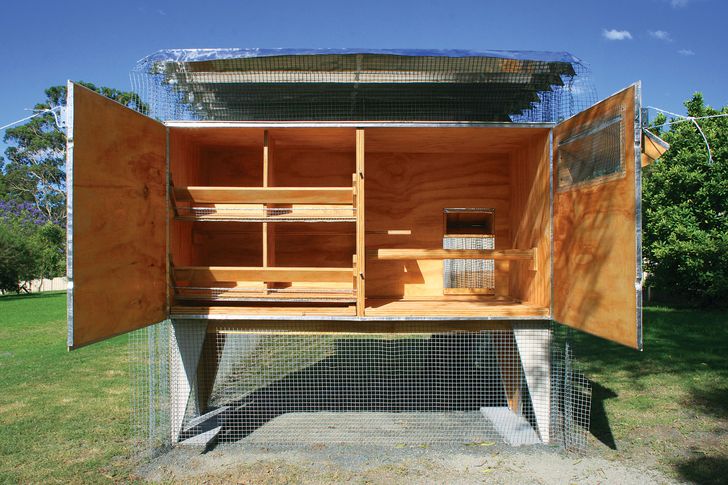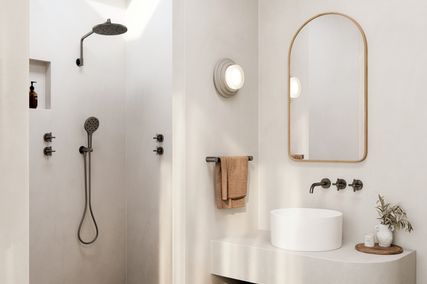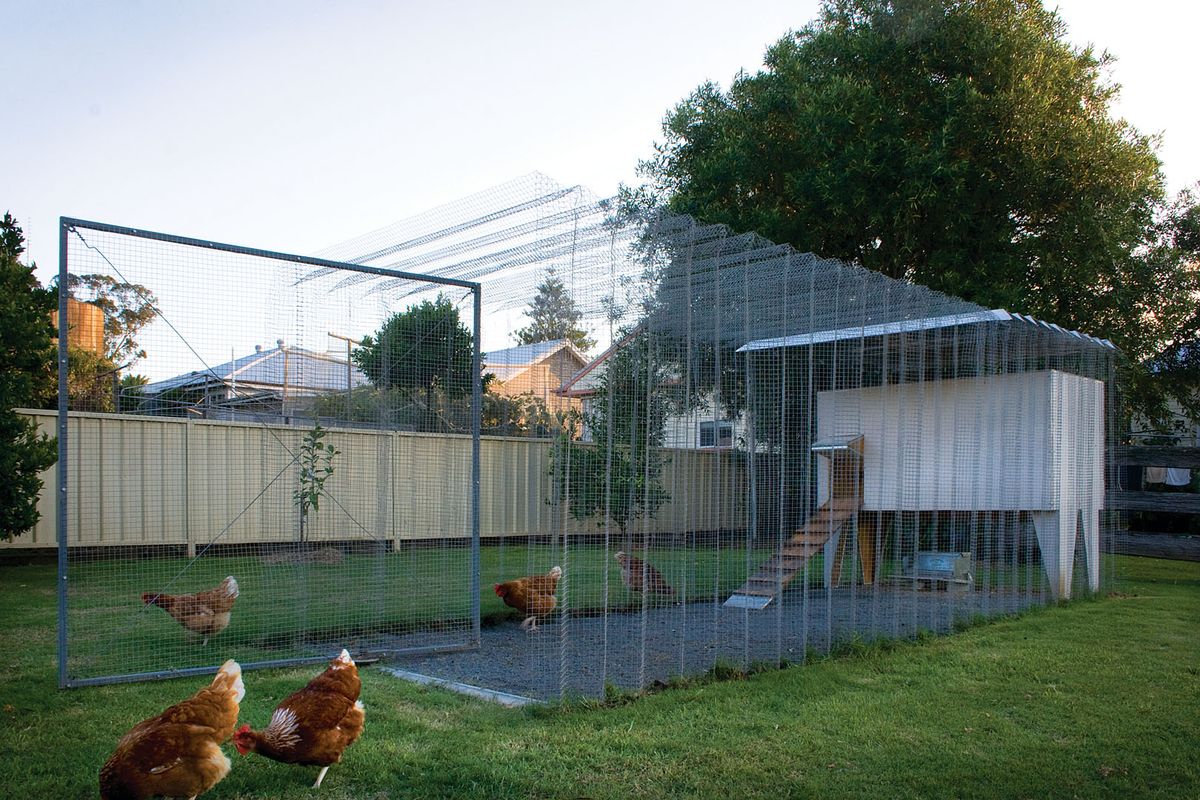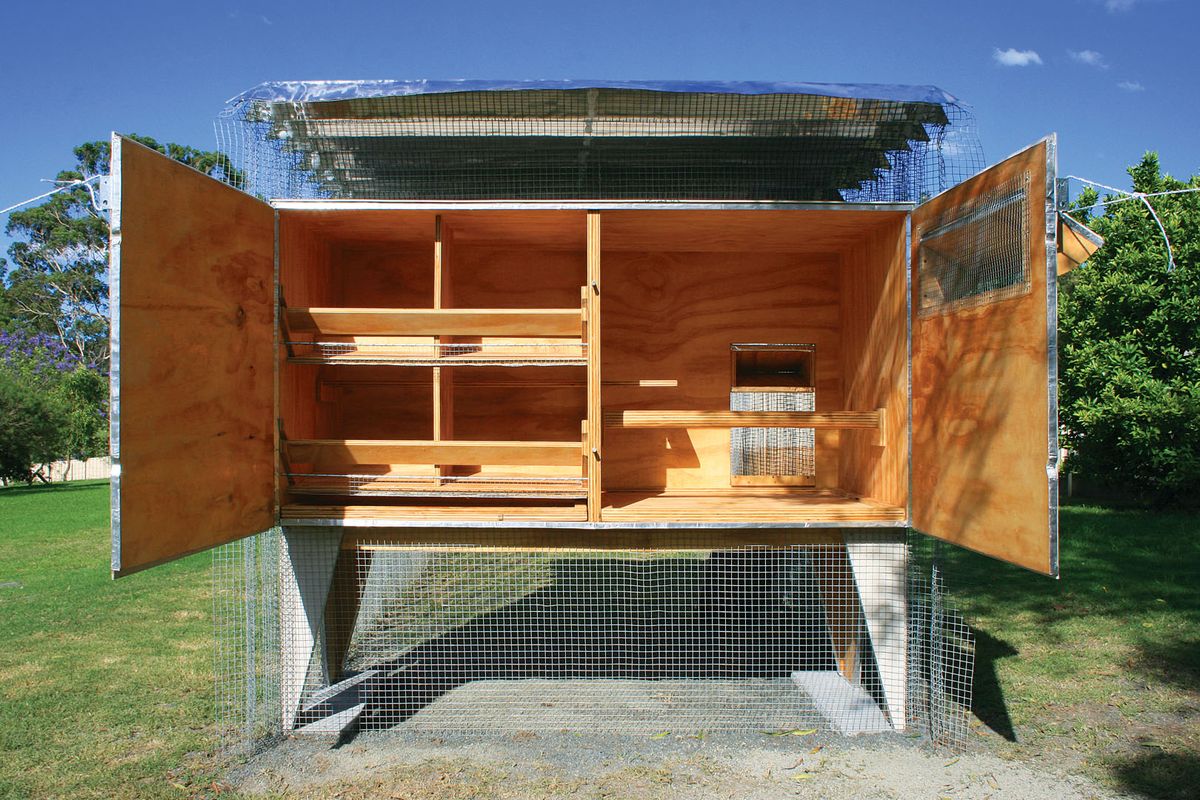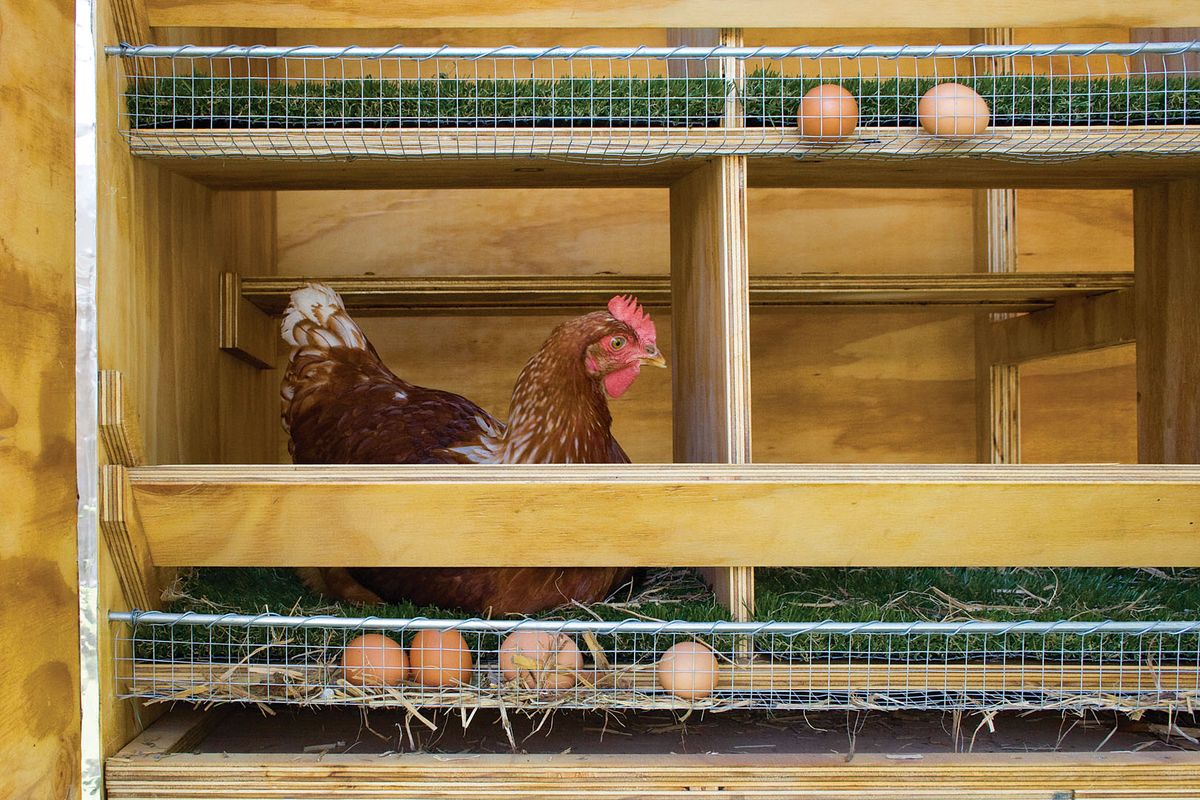Houses come in a variety of shapes and sizes. With his Origami Chicken Coop, Master of Architecture student Chris Mullaney has created a new home for six chickens in his parents’ backyard in Stroud, a small regional town north-west of Newcastle. The project demonstrates how small-scale architecture provides a necessary ground for experimentation with techniques and materiality.
The eggs roll down a sloped shelf into a basket, ready for collection.
The brief called for a viable alternative to available commercial products. The coop also needed to include roll-away egg collection and nesting drawers that are accessible from outside the coop (features that are not usually available in domestic models), and be tall enough to allow humans to stand up inside the structure. The roll-away egg collection element consists of a gently sloped synthetic turf shelf which the eggs roll down before gently dropping into a steel mesh basket. Perfecting the gradient required significant testing – Chris had to ensure that the eggs would survive the short drop.
Chris also added his own constraint to the brief: he wanted to experiment with the traditional coop form and create a more transparent object. To achieve this, he simplified the diagram of the coop and designed a self-supporting, frameless galvanized steel mesh structure that appears to dissolve into the backyard. Models and full-size prototypes were created before the final technique and materials (steel mesh assembled over a timber mould) were selected. Steering away from the ubiquitous “chicken wire,” Chris conducted research to ensure that the thicker, stronger, square galvanized steel mesh wouldn’t injure the chickens. Online forums and a useful family connection (Chris’s grandfather is an ex-chicken farmer) were helpful resources in the design development phase. Chris acknowledges that his family background gave him some prior knowledge of chicken care, including heat and shade requirements.
Nesting drawers are accessible from outside the coop.
Chris says the main benefit of raising chickens is not that it saves money but that it is a form of sustainable food production – it allows you to eat fresh food and know its provenance. In this way, the coop represents the designer’s ability to affect social and environmental sustainability; perhaps, as Chris found out during his research, this is one of the reasons that he isn’t the only architect who has designed a chicken coop.
Interestingly, it is even possible to measure occupant wellbeing in a project like this. Chris’s mother has reported that several of the hens have been brooding – literally getting clucky – which is a sign that they are too comfortable in their environment. The remedy for brooding? Locking the chickens out of the henhouse for a few nights at a time to ensure they don’t take their new, luxurious surroundings for granted. Perhaps there’s something in that for everyone.

